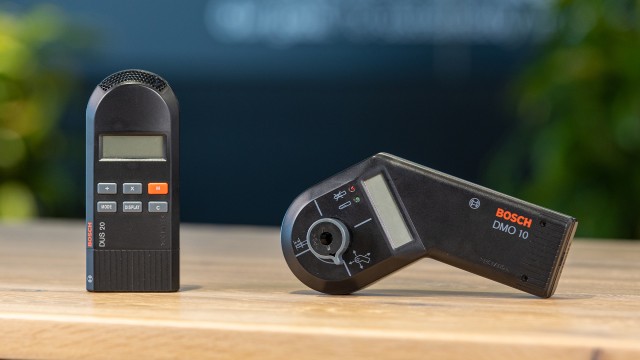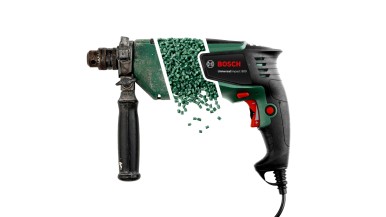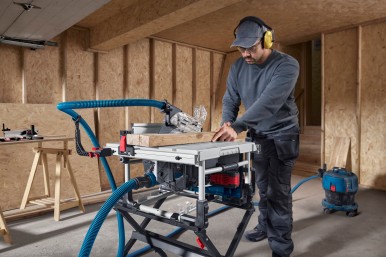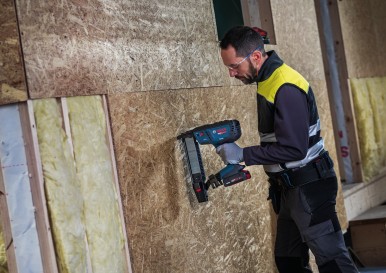Bosch launched the first measuring tools on the market 30 years ago: The DMO 10 digital metal detector and the DUS 20 digital ultrasonic range finder, both in black. Something which by today’s standards was basically as modern as a computer with a tube monitor represented a pioneering feat in 1992: The ‘Bosch high-tech bloodhound’, the affectionate name given to the DMO 10, reliably detected hidden metal objects underneath drilling locations. The DMO 10 was unique since it offered depth measurement of up to 50 mm for the first time instead of displaying objects without any depth information, something that had been normal up until then. The DMO 10 was intended to enable users of Bosch hammer drills in the successfully established 2-kilogram class to drill holes in walls without damaging the then expensive hammer drills on reinforcement bars or hitting electric wires. The DUS 20 ultrasonic range finder had a very long range of 20 meters at that time. Its aim was to make it easier to quickly determine room dimensions and use them to calculate the required amount of material – entirely without a folding rule or a measuring tape
The Robert Bosch Power Tools GmbH, a division of the Bosch Group, is one of the world’s leading providers for power tools, garden tools, power tool accessories and measuring tools. In 2024, its 18,700 associates generated sales* of 5.1 billion euros, about 90 percent of which outside of Germany. With brands such as Bosch and Dremel, the division stands for customer focus and great engineering progress. The core success factors are innovative strength and pace of innovation. In 2025, Bosch Power Tools will again launch more than 100 new products onto the market in its four business segments power tools, outdoor and garden tools, accessories and measuring tools.
Due to a change in the allocation of sales within the Bosch Group, certain revenues from Bosch Power Tools will be accounted for differently in the future. As a result, sales in this division appear to have fallen significantly compared to the previous year, although there was no actual change in economic performance in this regard.
The Bosch Group is a leading global supplier of technology and services. It employs roughly 418,000 associates worldwide (as of December 31, 2024). The company generated sales of 90.3 billion euros in 2024. Its operations are divided into four business sectors: Mobility, Industrial Technology, Consumer Goods, and Energy and Building Technology. With its business activities, the company aims to use technology to help shape universal trends such as automation, electrification, digitalization, connectivity, and an orientation to sustainability. In this context, Bosch’s broad diversification across regions and industries strengthens its innovativeness and robustness. Bosch uses its proven expertise in sensor technology, software, and services to offer customers cross-domain solutions from a single source. It also applies its expertise in connectivity and artificial intelligence in order to develop and manufacture user-friendly, sustainable products. With technology that is “Invented for life,” Bosch wants to help improve quality of life and conserve natural resources. The Bosch Group comprises Robert Bosch GmbH and its roughly 490 subsidiary and regional companies in over 60 countries. Including sales and service partners, Bosch’s global manufacturing, engineering, and sales network covers nearly every country in the world. Bosch’s innovative strength is key to the company’s further development. At 136 locations across the globe, Bosch employs some 87,000 associates in research and development.
Additional information is available online at www.bosch.com, www.bosch-press.com.




